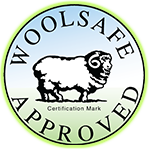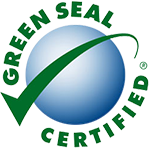Pets are great. They are there when we need them. Had a bad day at work? You know Fido has got your back when you get home. You sit on the sofa after a long hard day and rubbing up the back of the couch to come lean beside you he sits, leaving his natural oils clinging to the back and side of your beautiful sofa. Have you ever considered where that odd stripe about a foot or two (depending on the size) on your sofa came from? It’s oil, and today we are gonna talk about the removal of dog oil from your sofa!
Removal of Dog Oil: DIY cleaning
Removal of Dog oil can be a very DIY friendly subject. This is depending on the type of fabric we are talking about. If you have a relatively flat weave fabric, you can do a lot of things safely. If you have a fabric with a lot of nap caution is advised. Do not hurt the nap up with scrubbing. However, if you have a silk velvet sitting in a place where a dog can rub against it, I can only ask why? Why do you like to suffer?
Removal of Dog Oil: Vacuum!
The first option would be to vacuum the affected area really well. Sometimes what looks like dog oil is just fur or hair clinging to the fabric. If it is really tangled onto the fabric you can use a soft brush (such as a horse hair). Lacking a brush, just keep folding a cotton hand towel in half until you have a good bundle. You can hold the final fold much like a brush.
Removal of Dog Oil: Testing
If this fails to improve the appearance, the next step would be attempting to spot clean it. Now I recommend extreme caution in doing this because you can really mess things up if you are not careful. Damage to the fabric’s color, nap, or overall feel can occur if you use a chemical too aggressive or agitate too hard. You can use a neutral spotter on a soft towel or even some vinegar-water mix. Regardless of what you use, you should always test in an inconspicuous. Behind the cushion by the zipper is a good one. Make sure you let things dry to see if nap distortion occurred or if color loss/transfer will be an issue.
Removal of Dog Oil: Treating
After you have decided on a safe avenue for your DIY removal of dog oil it is time to start cleaning. Now, you have to remember you have limited control on extracting anything you put into your fabric. Do not pour the product you are cleaning with directly onto your furniture! I recommend putting a light amount on your towel and gently dabbing the furniture. Rubbing can be risky because it can hurt the nap of some fabrics. Work in very small sections. Use a hair drier (not too hot) to speed dry where you are working to see if it is worth continuing. Again, if you happen to have a velvet or other high end fabric, you should have stopped at the vacuum stage. Once these get wet it might never look better unless you call a pro.
Removal of Dog Oil: Calling a Pro
Maybe things in the test part didn’t work out. Your furniture maybe had a color that bled as soon as you got it wet as the one in the image above did. Maybe your fabric has a nap that once it got wet it never dried quite right. Furniture cleaning can be scary if you do not really know what type of material you have. Whatever the reason, If you reach a point that you need to have a professional come out and remove it as much as possible as safely as possible, you can trust us to take care of you.
Our guys will not only help you take car of the problem, but then they can help you feel more confident in teaching you in the treatment of minor spots in the future. Or they may justify your concerns by telling you not to ever touch it with any DIY stuff because your fabric may not be DIY friendly. Some fabric simply are not user friendly at all and hold little to no hope of recognizable improvement. If the last is the case, we will explain this to you and give you the option to save some money because we want to see great results too, not just take your money. Why clean something that is going to look exactly the same after a lot of work trying to improve it?




